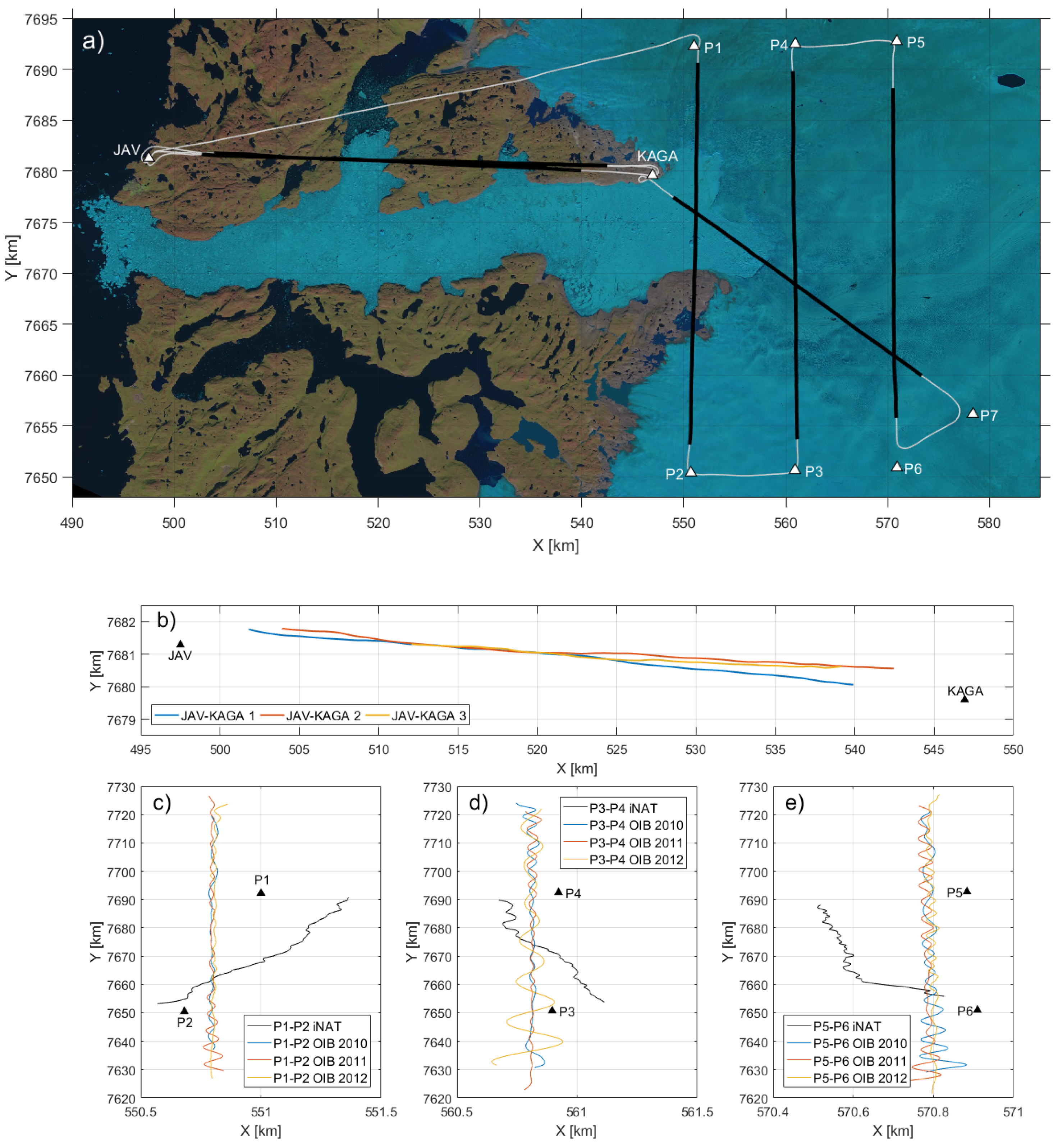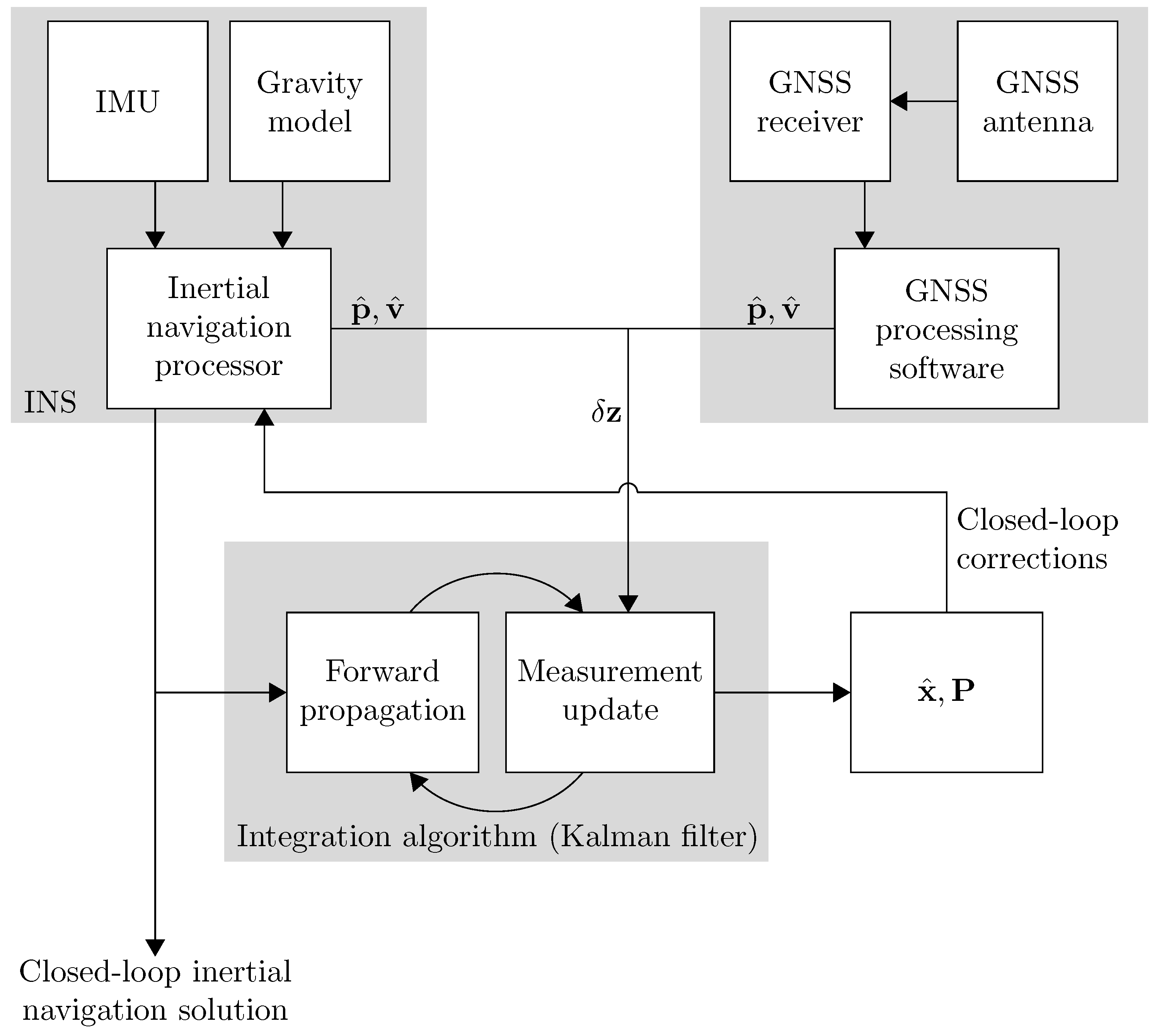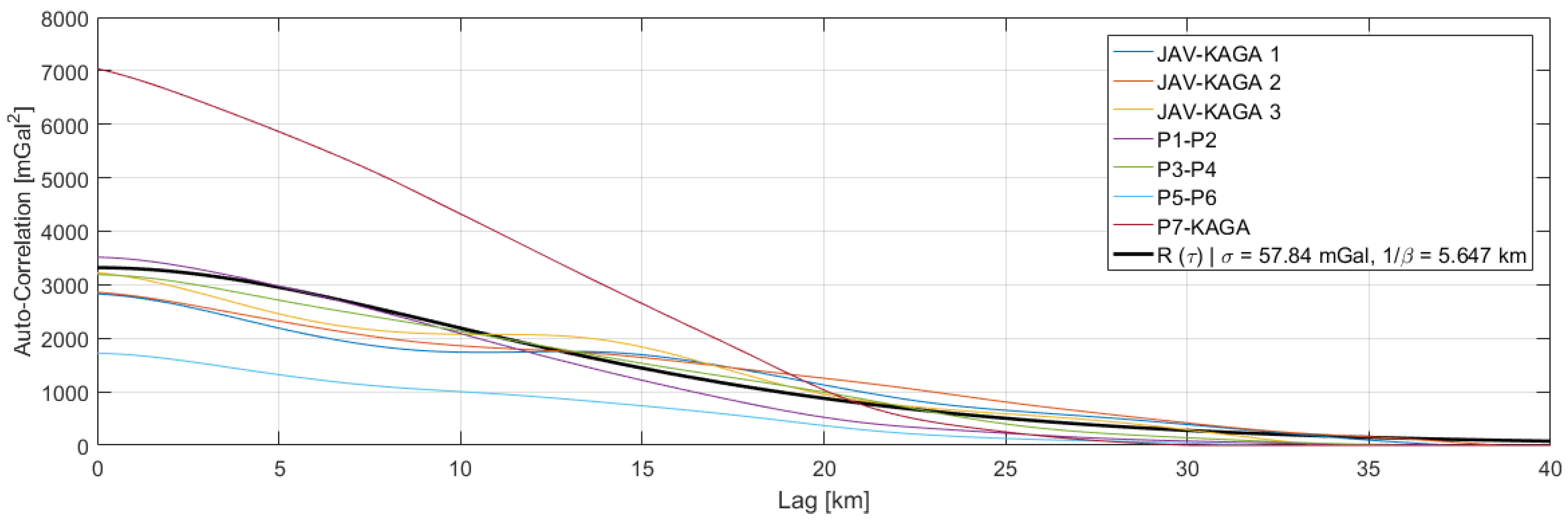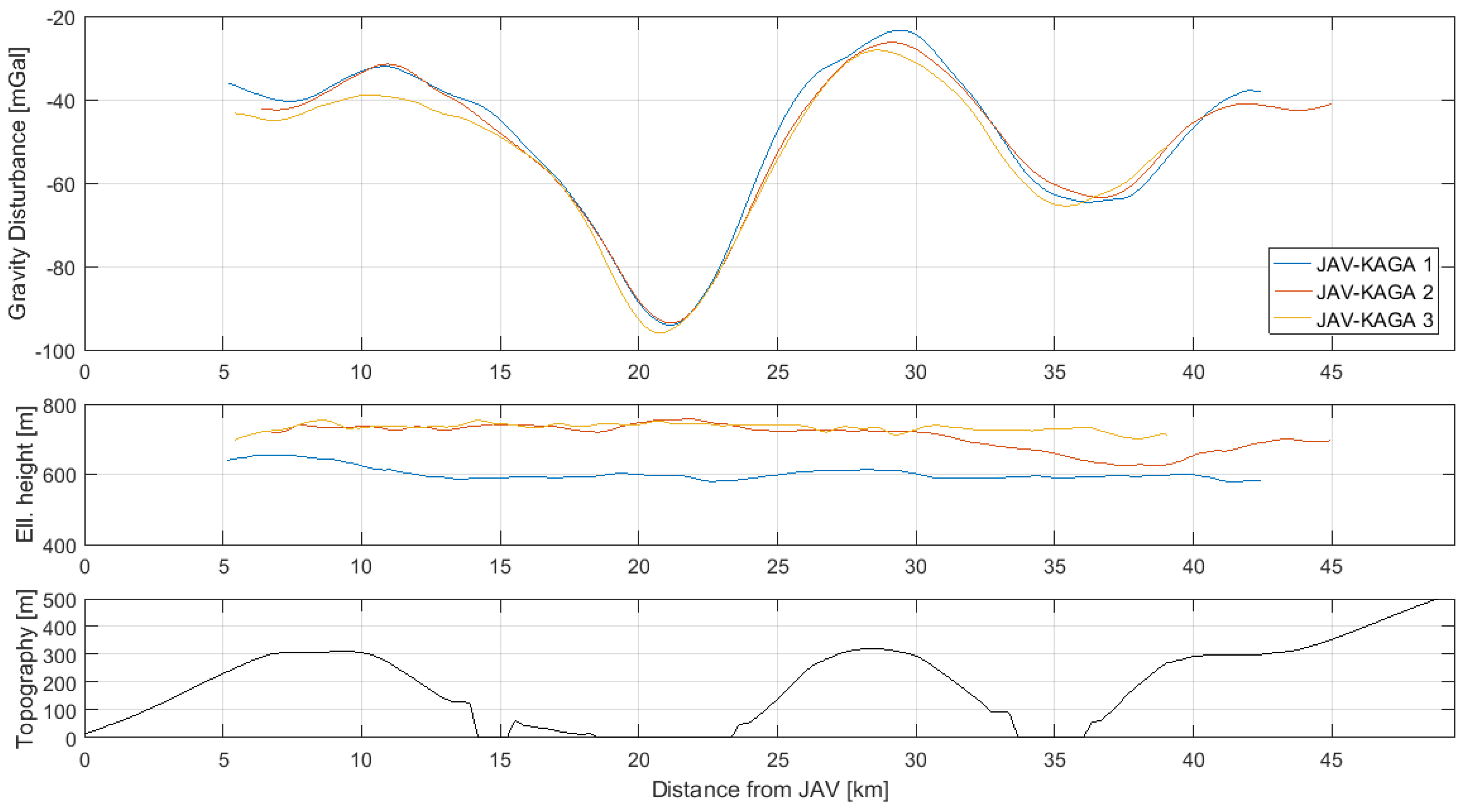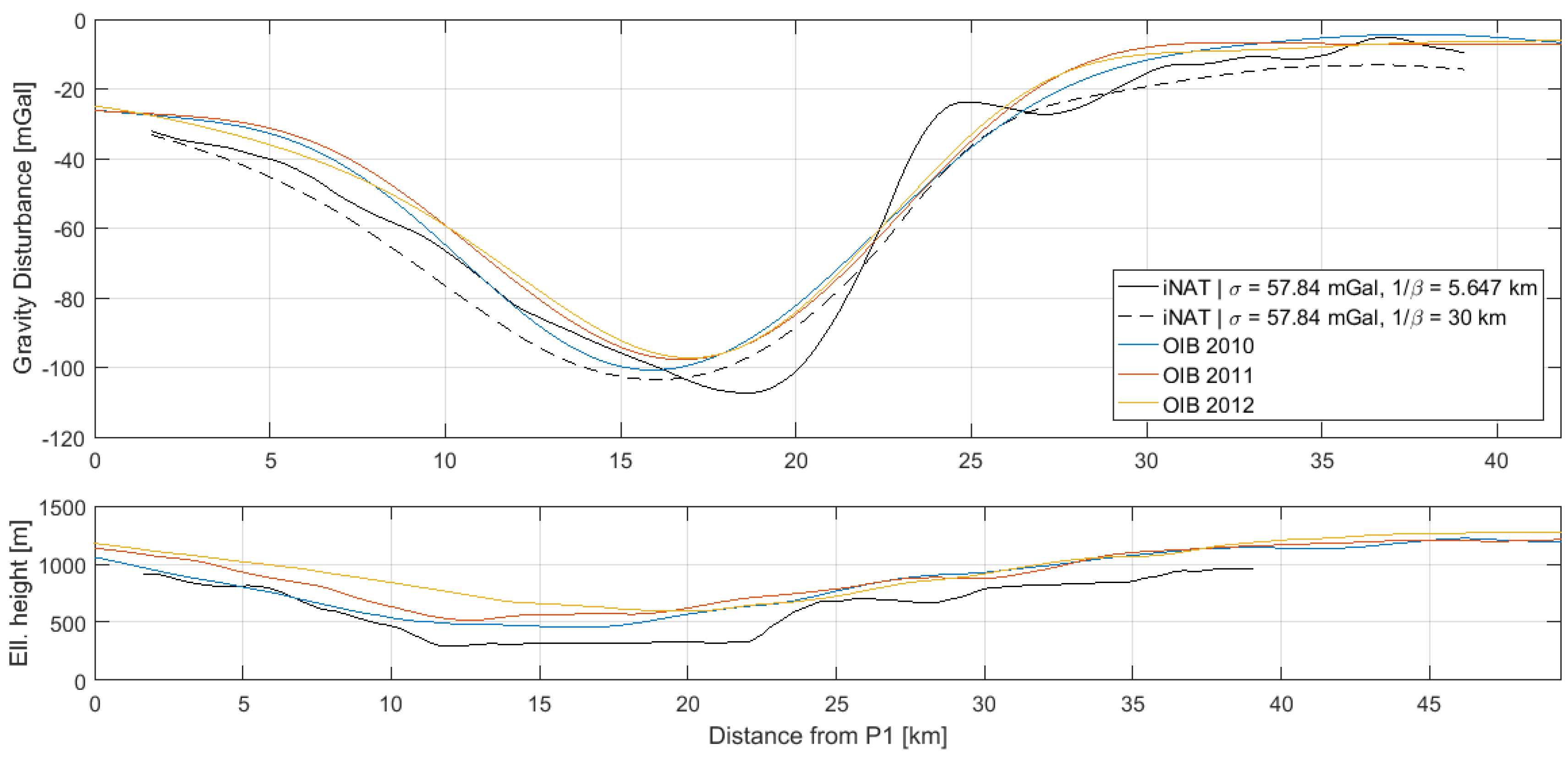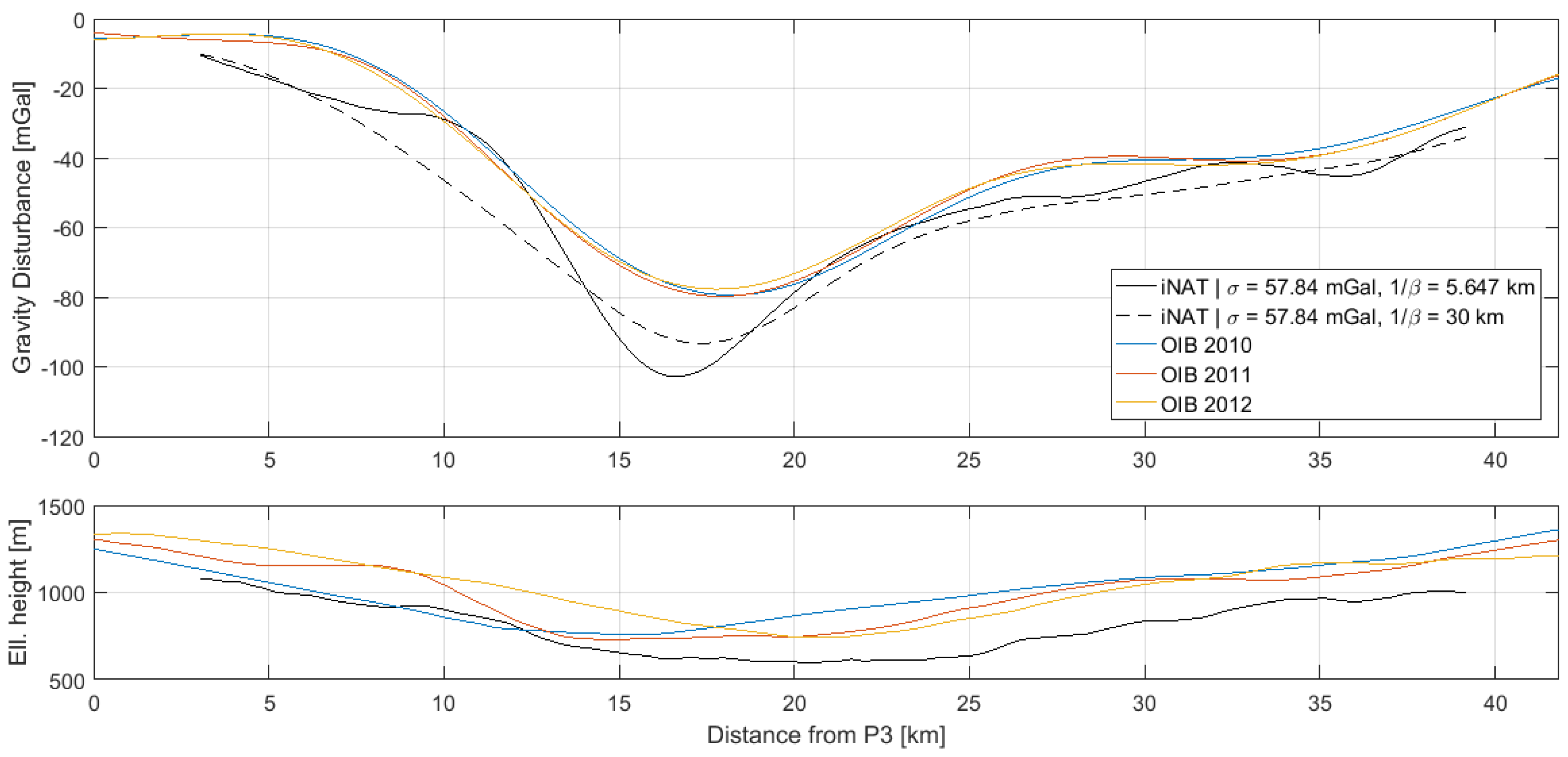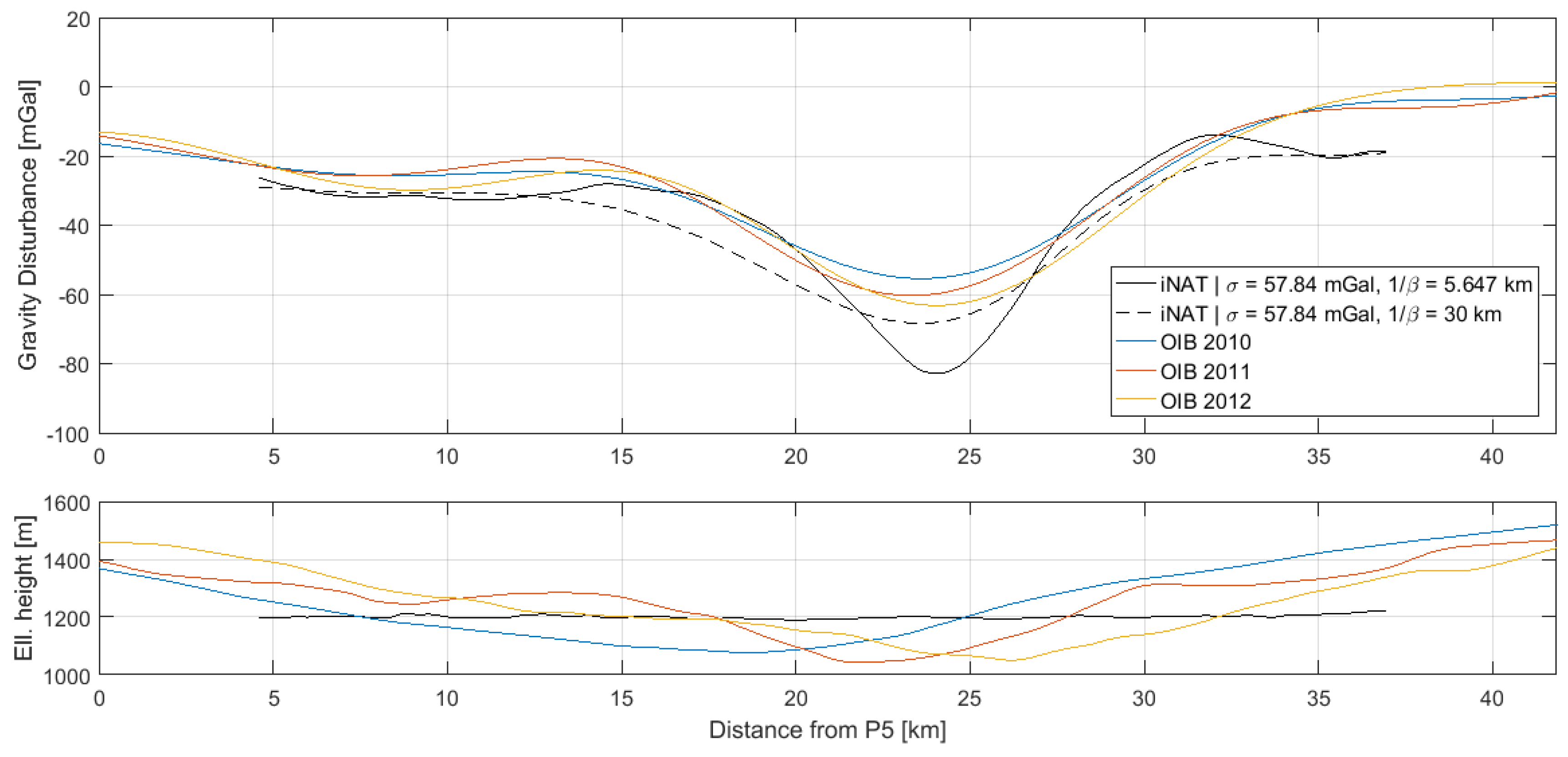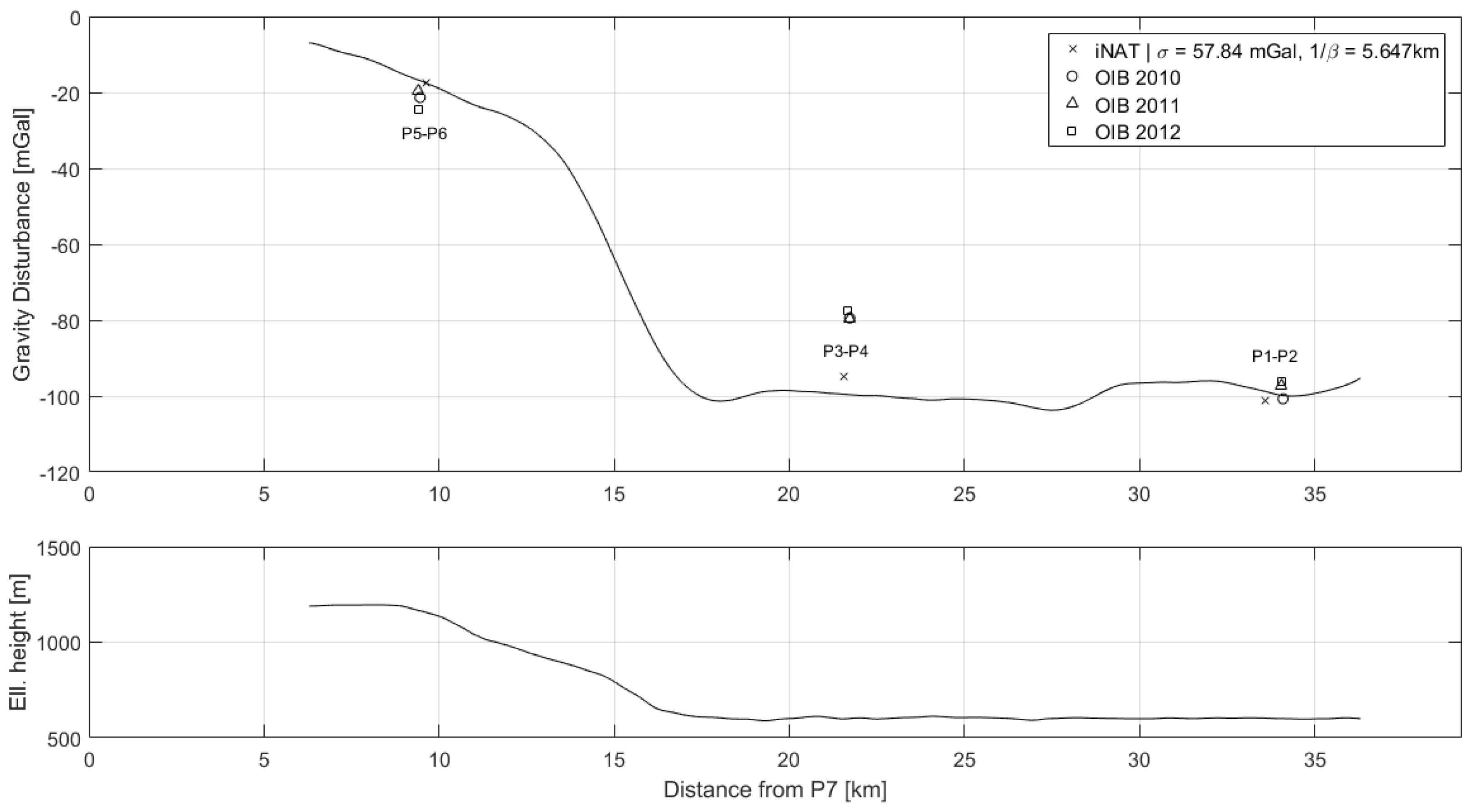Observations from IMU and GNSS are often combined in order to improve the navigation solution. Although the main objective is not improving the navigation solution, the tools for IMU/GNSS integration are well-developed and can be exploited here. In the first two of the following five sub-sections, the concepts of inertial navigation and IMU/GNSS integration will be briefly introduced. In the third sub-section, we describe how this framework can be exploited to arrive at gravity estimates, the fourth sub-section introduces external gravity observations, i.e., tie values, and the final sub-section outlines how smoothing is performed.
In this context, it is important to introduce some reference frames that are relevant for our purposes (see
Table 3). Since the IMU is rigidly attached to the helicopter, the observations are naturally resolved about the body frame (
b-frame) of the helicopter. Being inertial sensors, the accelerometers and gyroscopes measure with respect to inertial space, which is represented by an inertial reference frame (
i-frame). The Earth-Centred-Earth-Fixed frame (
e-frame) is relevant because coordinates and velocity are defined with respect to this frame. Finally, the attitude of the vehicle is usually specified with respect to the navigation frame (
n-frame), which is moreover closely related to the gravity field.
3.1. Inertial Navigation
Initialisation of the position is done using the GNSS solution, while the attitude is initialised through levelling and gyrocompassing ([
18] (Chapter 5.6.2)). After initialisation, inertial navigation is performed by sequentially adding small increments derived by integrating the IMU observations of specific force,
, and angular rate,
. Before integration, the observations are transformed from the
b-frame into the
n-frame and corrected for the effect of gravity along with any fictitious forces arising from the choice of reference frame. This process is expressed mathematically in terms of a coupled set of differential equations ([
19] (Chapter 4.3.4)):
where
are geodetic coordinates,
the Earth-referenced velocity resolved about the
n-frame axes and
is the rotation matrix from the
b-frame to the
n-frame. The parameters
and
are the radii of curvature of the prime vertical and meridian, respectively. The term
is the rotation of the Earth with respect to inertial space and
is the transport-rate, i.e., the rotational motion required to keep the reference frame aligned with the north, east and vertical axes as the vehicle travels across the surface of the Earth. Both of these rotational rates are resolved about the
n-frame axes and expressed in skew-symmetric form. For a more complete introduction, the reader is referred to standard textbooks, e.g., [
18,
19,
20]. Finally, the rotational rate,
, is related to the observed angular rate as
The gravity vector,
, is approximated using a model of normal gravity ([
21] (Chapter 2.8)), which can be computed as described in ([
22] (Chapter 4)). The implementation of Equation (
1) is discussed in ([
18] (Chapter 5)). The combined system of IMU and inertial navigation processor is denoted an Inertial Navigation System (INS). The attitude in terms of three Euler angles,
, can be derived from the transformation matrix,
, as ([
18] (Equation (2.25))):
3.2. IMU/GNSS Integration
The GNSS position estimates are only used to initialise the position for inertial navigation, meaning that the INS and GNSS navigation solutions are independent. The GNSS system provides estimates of position and velocity, while the INS provides estimates of position, velocity and attitude. These two estimates are combined in a cascaded (loosely coupled) approach using an Empirical Kalman Filter (EKF). The Kalman filter framework revolves around a linear dynamic system model ([
23] (Equations (4)–(102))):
where
is known as the state vector and contains all the variables describing the system, i.e., position, velocity, attitude and sensor biases,
is the system matrix describing the dynamics of the system, i.e., the navigation equations,
is a vector representing stochastic input to the system and
is a system noise distribution matrix, relating the stochastic driving terms to the state variables. The stochastic components imply that the state variables also have a stochastic nature and are defined in terms of probability density functions (PDFs). However, assuming that the associated PDFs are Gaussian, these distributions are completely defined in terms of their first two moments, i.e., the mean and covariance.
The system matrix,
, is formed using the navigation Equation (
1), while the system noise vector,
, represents sensor errors such as random noise and bias variation. Since the system model is linear, the navigation equations are linearised about the trajectory generated by the INS. This kind of linearisation is what characterises the EKF. Inertial navigation is then performed in a recursive manner by generating a navigation solution from current time,
, until the time where the next GNSS estimates are available,
. The associated error covariance estimates are accordingly propagated as
where the transition matrix,
, and system noise,
, can be formed from Equation (
4) using the method of Van Loan [
24,
25]. The transition matrix,
, is formed using the system matrix,
, such that it eventually defines the correlation between the navigation parameters through the error covariance matrix. In this way, the stochastic driving terms do also not influence the navigation estimates themselves, but only the error covariance matrix. These stochastic processes are defined by the user and will eventually determine the weighting of information between INS and GNSS navigation estimates. Here, random noise on the accelerometer and gyro observations are modelled as white noise processes, while the bias variation is modelled as Brownian motion, i.e., random walk processes. These processes are defined in terms of Power Spectral Density (PSD) of the associated white noise processes and are tuned by the user to give the best navigation solution. The values used for processing this data are shown in
Table 4.
Any observations,
, at discrete time instances,
, are included into the Kalman filter using a linear measurement model ([
23] (Equations (4)–(136))):
where
is the measurement matrix relating those observations to the system variables and
is a measurement noise vector. The observations are thus assumed to be a linear combination of state variables, corrupted by noise. The formation of such a measurement model for GNSS position and velocity observations is discussed in ([
18] (Chapter 14.3)). From the GNSS and INS estimates,
,
,
and
, the measurement innovation is formed:
which is used to update the Kalman filter estimates as ([
18] (Equations (3.24) and (3.61))):
where the superscript minus denotes values before the measurement update and
is a weighting factor determining the influence of the new information. This factor is also known as the Kalman gain and is derived by minimising the trace of the updated error covariance matrix,
, i.e., minimising squared errors.
The processing is thus performed using a semi-cascaded approach. First, the GNSS observations are processed into position and velocity estimates for the entire survey. Having initialised the INS solution, inertial navigation is performed until the next GNSS estimates are available. The INS solution is used to form a linear system model (
4), which allows the propagation of the error covariance matrix forward in time, alongside the INS estimates. The stochastic error terms accounting for sensor errors will also influence this forward propagation. The INS and GNSS estimates are combined, using a least squares approach based on the associated error covariance, in order to yield statistically optimal estimates of the state variables. These optimal estimates are then used to correct the INS estimates, which are again propagated forward in time. This is illustrated in
Figure 3.
The Kalman filter therefore has a cyclic nature, alternating between forward propagations and measurement updates. Since correlation between different state variables is built through the forward propagation phase, the Kalman filter also provides estimates of other states than those directly observed. In this way, the GNSS observations are not only used to correct the navigation solution, but also to continually calibrate the IMU, since estimates of sensor errors will be available.
Finally, in order to minimise linearisation errors and processing time, an error-state implementation was used in contrast to a total-state implementation. This means that the system model can be expressed as
where
denotes errors,
are accelerometer biases and
are gyroscope biases. The stochastic terms
,
,
and
are white noise processes defined in terms of their PSD. The form of the matrix,
, is derived from the navigation equations by first applying a perturbation operator and then linearising with respect to the state variables ([
19] (Chapter 5.4)).

